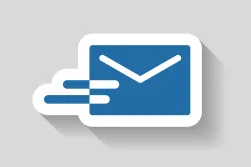After a year of promises that the technology would revolutionize Wall Street, anyone can now download an entire blockchain specifically built for financial services, according to Bloomberg. Chain, the San Francisco-based startup that’s working with Visa and has made a presentation on the benefits of blockchain to Federal Reserve Chair Janet Yellen, just released to the public the 30,000 lines of open-source code that make up its Core Developer Series.
Software developers, engineers, traders and executives can now build and test any type of application they think will help improve efficiency in their business, said Adam Ludwin, Chain’s chief executive officer. “Before today, most blockchain projects existed in PowerPoint presentations,“ Ludwin said in an interview. “We’re releasing the culmination of two-and-a-half years of work.“
Industries from finance to health care to utilities are experimenting with blockchains with the goal of radically changing how payments are tracked, securities and derivatives trades are processed, and health records are stored, to name just a few of the potential uses. On Wall Street, blockchain is being hailed as a way to reduce payment times from days or weeks to real time, freeing up billions of dollars in capital that’s now tied up until accounts are verified.
The same blockchain released by Chain is powering the near real-time transaction system being developed by Visa. Known as Visa B2B Connect, it’s an attempt to overhaul and vastly speed up how global business payments are processed.
The blockchains associated with the digital currencies bitcoin and ether are free and can be used by the public to build upon. Yet those weren’t made with financial applications in mind, which sets Chain apart, Ludwin said. Other companies such as Symbiont, Digital Asset Holdings and R3 are also working to develop blockchain. In the case of Ripple, its blockchain is moving money around the world on a daily basis. But access to those systems is restricted to partners or customers and isn’t free to the public.
Chain is designed to be shared among users that are known to each other such as banks and their customers, what’s known as a permissioned blockchain. That’s not how it works with bitcoin, whose users are anonymous. And Chain is built to host multiple assets, not just a single digital currency like bitcoin or ether, Ludwin said.
Still, the adoption of blockchain technology faces obstacles to success. Fierce competitors will need to collaborate. Regulatory hurdles could kill or significantly slow progress. And although cross-border payment networks based on distributed ledgers could save banks money, it would also drain revenue away from other parts of their business. Another challenge is integrating new technology into existing systems.
“Chain’s technology is definitely not hype,“ said Emin Gun Sirer, an associate professor of computer science at Cornell University. “They are one of the most credible blockchain providers out there.“ Chain’s focus on financial services “makes it unique“ and the ability of developers to now have an underlying blockchain to write programs on top of is big step, he said.
“It looks to me like this is the second wave of blockchain technology,“ he said, with the first being the underlying systems that make bitcoin and ethereum possible. “I expect to see many more of these offerings. This is by no means the last.“



















